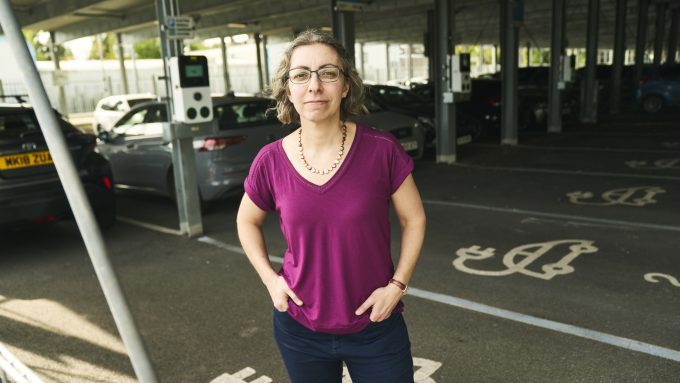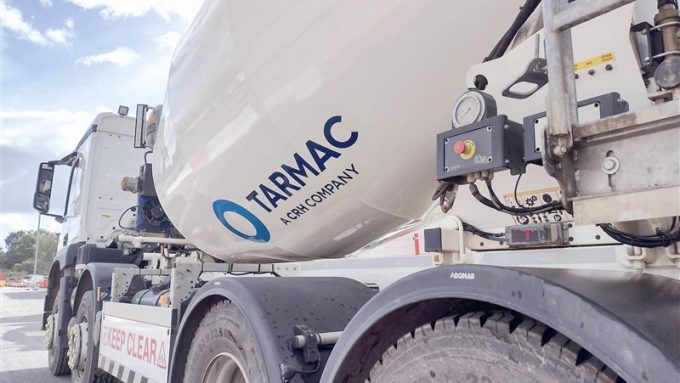
Healthcare entrepreneur helps older persons stay safe at home


“Life threw me a curveball in 2017 when my dad got dementia,” recalls Kelvin Summoogum of MiiCare; developer of an AI-enabled virtual assistant to help older persons leaving hospital live independent lives.
“He had recently visited from Mauritius, and I realised something was not right. Early in his career he was a mathematician, and we always played a game at dinner asking him to solve complex equations; but this time he struggled. Then we played table tennis, and I won – but I’d never beaten him before.”
Two months later, Kelvin’s father was diagnosed with Parkinson’s disease dementia and within weeks suffered a fall and broke his hip. In hospital he had a stroke, and became bed-bound.
“I quit my job to care for him, but he was living 6000 miles away. I couldn’t stay as my wife was pregnant with our second child. I thought maybe I could support Dad remotely, so this is how the idea for MiiCare began.”Kelvin Summoogum of MiiCare
Kelvin – a former smart cities and healthcare management consultant – turned his attention to developing a piece of technology to monitor the condition of older persons recovering at home after a stay in hospital; listening out for signs they may need help.
He spent months building a cube-shaped device, and booked a flight home to show his father. But just days prior to departure, Kelvin received the news that everyone dreads.
“Today when the company is going through challenges, the thought that always comes to my mind is: ‘Why did I start the company?’ What I’ve had to go through to get back on my feet, after losing my father has been very powerful."
Monitoring and companionship in one
Kelvin wanted to build a device that was not just a health monitor, but also a digital companion that showed empathy and provides utility; something that people could talk to and cheer them up. He was also aware that adult social care services in the UK often hand their patients pendants featuring a call button to use if they get into distress – but very few remain around their necks.

“We needed something that is not intrusive, and allows older adults to feel free to live their lives; allowing technology to help them live safely and healthily within their homes.” He was also keen to find a way of preventing people from having to move to care homes, or being readmitted to hospital.
Early iterations of the device featured a voice reminding patients to take medication or drink water at certain times of the day. It also featured sensors detecting if someone’s breathing patterns had changed, or if they had been out of a room for much longer than usual – allowing an alert to be sent to family members or carers to check on their loved one.
After his father passed away, Kelvin approached a local church and tested the device with 50 of the congregation, who gave him valuable feedback.
More recent versions of the unit feature machine learning and AI; something Kelvin studied at the University of Kent as a doctoral researcher. The technology is focused on acoustic sensing and collects data from 70 sources every hour to provide an early warning of distress, changes to baselines or certain decompensation in health.
These include listening to changes in voice patterns to spot any signs of a respiratory tract infection, or to detect if a patient is suffering from low mood or confusion, or whether they are displaying signs of delirium.
The device also listens out for footsteps to detect if someone is off-balance and more likely to fall over, and can even register if people are moving slower than expected or frequent trips to the bathroom which, if logged several times, could indicate an underlying health concern such as a urinary tract infection or the onset of diabetes.
Data is aggregated and fed to an external care agency, so the provider can monitor the patient sensors and arrange for an in-person visit when needed. One of the first customers of the new technology was an NHS Trust in Kent building a dementia village near Dover.
In recent years, Kelvin and his team introduced a conversational AI, which they named ‘Monica’. “We named our conversational AI after one lady who was a very influencial research participant from Age UK. She helped MiiCare develop the framework of engagement and conversation, designed to be accessible and easily understood by vulnerable older adults including those with mild cognitive impairment.
Sadly, the lady progressed into stage two dementia and to honour her dedication to MiiCare we called our conversational AI, Monica” says Kelvin. Over the years, Kelvin has come to appreciate how some patients ‘bond’ with their conversational AI, which is hosted in the cube-shaped device, especially if they receive a personalised greeting from Monica, when walking into the kitchen of a morning.
Co-operating with the Catapult
Kelvin had been working with several companies in the Catapult Network as a health consultant, and contacted Connected Places Catapult to find out how its human centred design team might help in the development of a research project into his monitor, and capture feedback from trials.
Staff also conducted user research with patients and clinicians, carried out a strategic market assessment, and assisted with stakeholder engagement and dissemination. Read a Whitepaper from the ‘Discharge to Assess’ project.
“Today we are working with 40 different organisations in health and social care, and our sensor has helped to reduce the number of days spent in hospital beds by three quarters,” explains Kelvin.
MiiCare says that delays in discharging older persons from hospital cost the NHS hundreds of millions of pounds a year, and that lengthy stays increase the risk of patients suffering further complications or being re-admitted.
“Bed blocking is one of the main reasons there are such long waiting times for treatment,” Kelvin adds. “The minute you have recovered you should be going home because in hospital you become sedentary and are exposed to infection. Everyone wants to go home, and that is what we’re helping them to do.”
Aiming for a lasting legacy
Kelvin’s long-term aim is to leave a positive impact on one billion lives: including not just older adults, but everyone in their families who look after or care for their relatives.
“When I started the company, I wanted to make sure nobody has to go through what I went through with my dad.” He expresses frustration at grand ambitions to develop technology that helps people “explore space or head to Mars; and yet we're not really giving enough attention to people here. Who gave us the right to think this way?
“Growing up, I always wanted to be remembered for something that nobody else is doing, but then as a child I also recognised that Mauritius in an island that few people know about.
“But my grandmother always said to me: ‘You just need to work hard; where your home is does not define who you become’. I’ve come to realise that the amount of hard work you put in – and how much you want something – are what define who you become.”
Read a Whitepaper from the ‘Discharge to Assess’ project, which features project partners Connected Places Catapult; MiiCare; De Montfort University; Willows Health; Leicester City Council; Leicestershire County Council; the Leicester, Leicestershire & Rutland Integrated Care Board and University Hospitals of Leicester NHS Trust.





